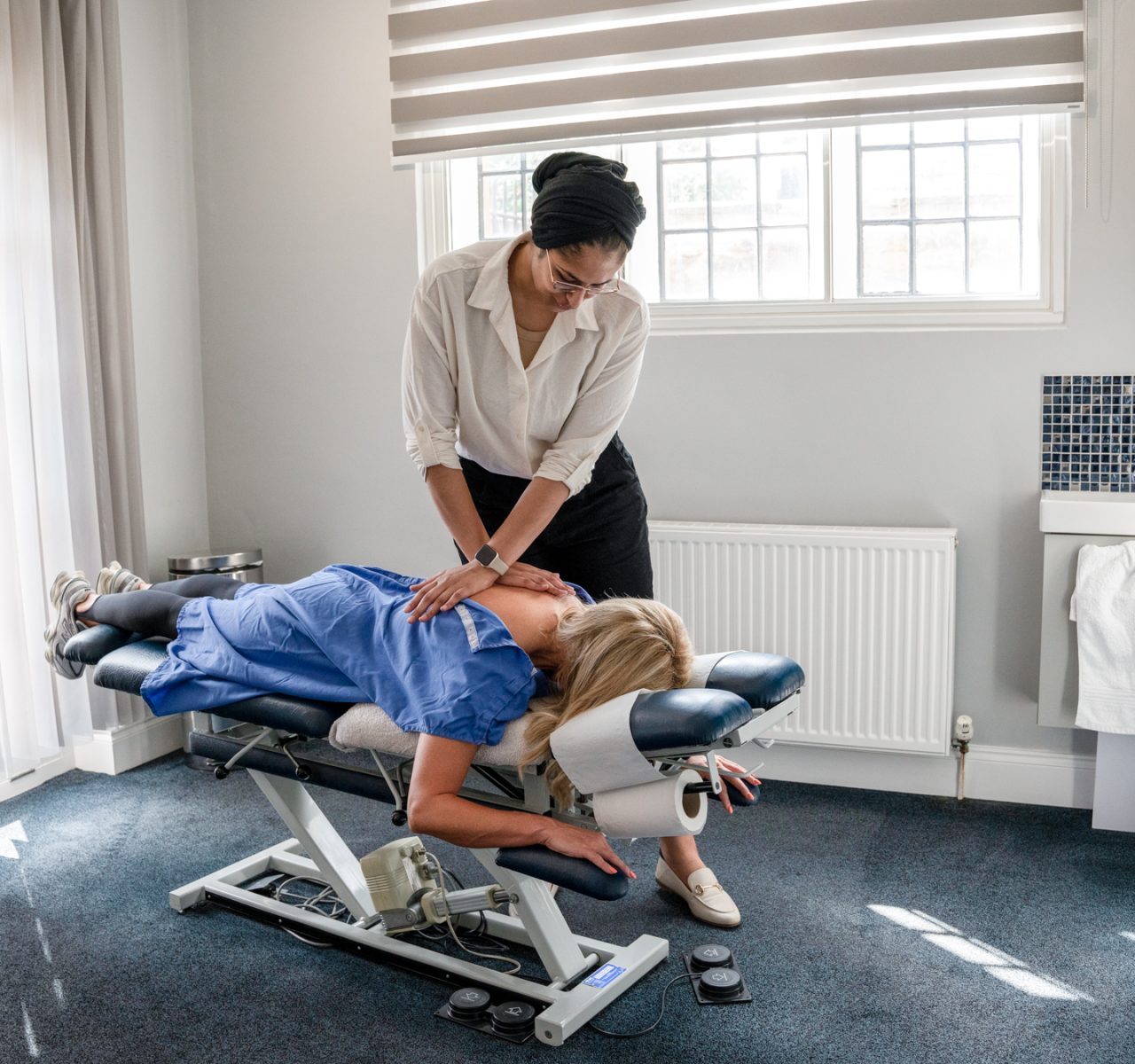
Lumbar Spinal Stenosis
Ten facts you should know about Lumbar Spinal Stenosis
The word ‘Chiropractic’ is derived from the Greek words cheir meaning ‘hand’ and praktos meaning ‘done’ i.e. Done by Hand.
The beginning of chiropractic can be traced back to 1895 when Canadian Daniel David Palmer performed the first adjustment and went on to found The Palmer School of Chiropractic in Davenport, Iowa in 1897.
Written records from the ancient Greek and Chinese civilisations, dating back several thousand years, refer to spinal manipulation. It is well documented that even the ‘father of medicine’, Hippocrates, used manipulation in the 5th century BC, so manipulation is nothing new.
DD Palmer realised that although various forms of manipulation had been used for hundreds if not thousands of years, no one had developed a philosophical or scientific rationale to explain their effects.
DD Palmer’s major contribution was therefore the codification of the philosophy, art and science of chiropractic. The art of chiropractic began with the very first spinal adjustment in September 1895.
DD Palmer continued to develop chiropractic and in 1897 established the Palmer School of Cure, now known as the Palmer College of Chiropractic, in Davenport, Iowa where it remains to this day.

Want to know more? Request a Callback
Or give us a call, to find out how we can help you with How Did Chiropractic Start?.
Book an Appointment
Schedule an appointment for How Did Chiropractic Start? tailored to your needs.
The 20th century saw the growth and development of the profession world-wide, gaining recognition and respect for the place it has taken in the primary care environment.
Influential research has underpinned the development of the profession and has come from both within and outside of the chiropractic research communities. Chiropractic is unique in that the profession is organised internationally and there are international standards for education.
In little over 100 years chiropractic has grown from a small profession to become the third largest independent healthcare profession in the Western world. Since Palmer College opened, chiropractic has developed rapidly and there are now over 35 schools and colleges around the world and on every continent.
In spite of chiropractic growing rapidly in Europe, even by the early 60s aspiring chiropractors still, by and large, had to travel to the USA to receive an education.
Several attempts had been made to establish European chiropractic colleges in countries such as Switzerland and Denmark but all either failed or were short lived.
To resolve this problem, a group of British and other European chiropractors bought a small house in Bournemouth, on the south coast of England and established The Anglo-European College of Chiropractic or AECC.
At the first graduation ceremony there were only two graduates, but the college grew rapidly. In order to develop the course to degree standards, significant investment in facilities had to be made and in 1981 AECC moved to their current location in Boscombe.
In 1987, the AECC course was granted degree status and was validated by the university of Portsmouth. In 2005 the AECC became an associate college of Bournemouth University, who validate their Undergraduate masters course, this has meant that students from the UK and EU are eligible for funding.
In 1990, Diana, Princess of Wales agreed to become the patron of the AECC and visited the college in April 1991.
The intake is now in the region of 120-140 students per year.
The only other available training in the UK to become a fully qualified chiropractor is at The Welsh Institute of Chiropractic (WIOC) in Glamorgan, Wales.
For many years chiropractors practised under common law, which meant that anybody could call then a chiropractor. This has now changed.
In common with medical practitioners and dentists, chiropractors are registered by law under the Chiropractors Act 1994 and the title ‘Chiropractor’ is protected under this legislation. The profession is statutorily regulated through the General Chiropractic Council (GCC) and it is illegal to practise as a chiropractor without being registered with the GCC.
The General Chiropractic Council has a mandatory requirement for chiropractors to undertake a programme of continuing professional development, (CPD), as a condition of annual re-registration.
Before the Chiropractors Act and the development of the GCC chiropractors had self-regulation, mainly regulated by the British Chiropractic Association (BCA).
The BCA is the largest and longest-standing association for chiropractors in the UK. The BCA, founded in 1925, now represents over 50% of UK chiropractors. The BCA only accepts members who have graduated from a nationally or internationally-recognised college of chiropractic education, after a minimum of four years full-time training and aim to promote, encourage and maintain high standards of conduct, practice, education and training within the profession in the UK.
The BCA was a founder member of the European Chiropractors Union and the World Federation of Chiropractic.
All BCA members are covered by a professional indemnity insurance and the Association operates a robust professional standards and complaints management process.
Chiropractic treatment has developed tremendously since the beginnings.
There is now plenty of research evidence for chiropractic, more than many other treatments for back pain and other muscle and joint problems, to support its effectiveness, safety and patient satisfaction.
There are now several accredited training courses in Europe and the rest of the world.
Many countries have chiropractic treatment as part of their health service – unfortunately not in the UK, but if you want to change that we suggest you write to your local MP.